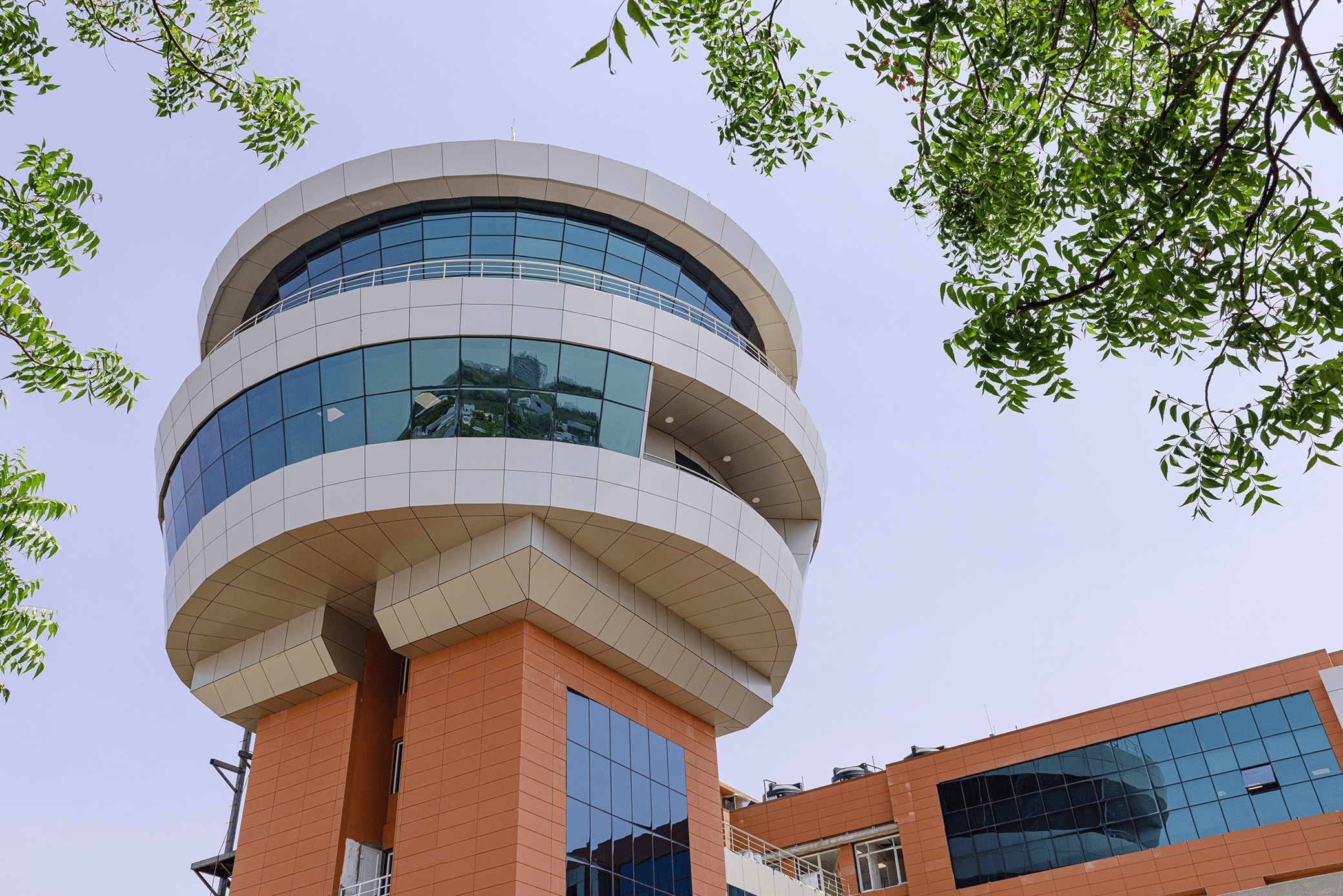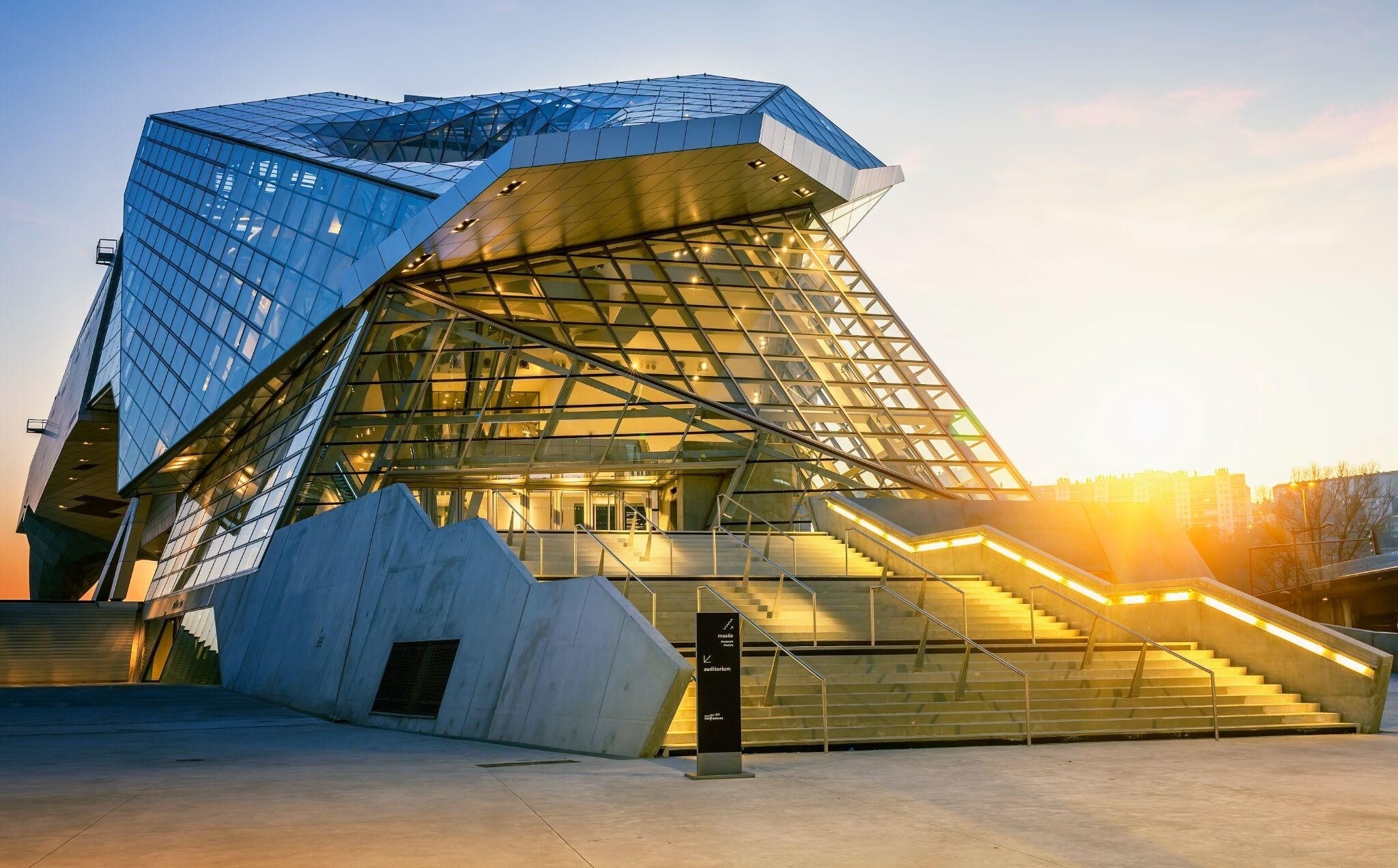
Biomimetic design is getting closer to nature through the way buildings and landscapes are constructed. Biomimetics is a word derived from Biommicry, a Greek word which is a practice of learning and mimicking the designs and processes originally found in nature. As sustainable architecture is the need of the hour, architects and designers from all over the world are taking inspiration from the patterns we find in nature as well as biological blueprints that have proved to be incredibly successful over millions of years.
When ACP Cladding is used in biomimicry, it leads to innovation. ACP’s adaptive features such as flexibility, lightweight, and resistance to environmental factors make it the perfect canvas for biomimetic designs. In the blog, we have cumulated the application of ACP sheets in creating biomimetic designs, and the ACP sheet design series which can be used for the same.
Nature-Inspired Biommetic Designs
1. Soap Bubbles Inspired Designs, The Eden Project

The Eden Project which is located in London is one of the largest greenhouse projects that involves biomimicry in design. The Biome design concentrates on sustainability and efficiency aspect. The concept has been derived from soap bubbles. The design supports efficient, lightweight, sustainable and easy-to-handle modules. The same design concept can be created in ACP Cladding to form polygons that help in sustainable construction.
2. Ventilation Inspired by Termite Mounds, Eastgate Centre

The Eastgate Centre of Zinbamwe is inspired by the ventilation design of termite mounds. To lower the electricity bills, this design is adapted to the building. The self-cooling feature of the termite mounds helped in better indoor climate regulation. This innovative design helped in maintaining a stable and comfortable environment inside without being heavily relied on traditional air conditioning systems. This reduces around 10% of energy dependency.
When it comes to ACP sheets, this can be achieved through CNC-cut panels. The geometric design is created which draws inspiration from a termite mound, and ACP Cladding is installed strategically on the exteriors to create a continuous flow of fresh air without the need for energy-intensive cooling.
3. Bird’s Nest-Inspired Design, Beijing National Stadium

Beijing National Stadium draws inspiration from a bird’s nest. The intricate lattice-like structure draws inspiration from the nest of a bird. How does this help in sustainable construction? The geometric design inspiration creates a column-free structure which helps in removing the obstruction of the audience while enjoying shows. The lattice work on the architecture helps in well distribution of load which can withstand heavy load and stresses experienced during concerts and sporting events. Lattice worked panels can be used in creating a similar design structure that adds strength, and design flexibility to the construction.
ACP Sheets: A Versatile Material for Biomimetic Designs
Incorporating ACP sheets into biomimetic designs allows for the creation of structures that mimic the efficiency and sustainability of nature. Here are a few examples of how ACP sheets can be harmonized with nature through biomimetic designs:
Honeycomb Harmony
It is no secret honeycomb is the poster child of biomimicry design. The hexagonal design that honeybees create for storing honey is known to be a genius shape for construction. The design is stronger, and sustainable and adds aesthetic value to construction. Inspired by the same, we at Viva created a honeycomb panel series, in which thin sheets of aluminium are conjoined to the hexagonal shape of the core. When the core and the thin sheet of aluminium are sandwiched, it creates an I-beam structure that provides a high strength-to-weight ratio and support to the panel. The honeycomb panels are useful in retarding fire, and delaying its penetration as the hollow structure prevents fire propagation.
Imitating Textures and Patterns
Bio means life and mimicry means imitating. When it comes to the utilisation of ACP sheets in biomimicry, they are known for mimicking the appearance of natural materials such as wood, stone, or foliage. By recreating these natural textures, architects can bring the beauty of the outdoors inside while reducing the need for actual natural resources.
Evaluating Organic Shapes
As mentioned in the blog earlier, the way nature can be incorporated into architecture, to create sustainable constructions that address the challenges and opportunities of contemporary construction. Biomimetic designs such as fluid-like water, leaf-like structures, and bird’s nest are both beautiful and resource-efficient. ACP being lightweight, and highly flexible they can be designed in curves, and undulating forms inspired by natural organisms.
Enhancing Energy Efficiency
Nature often offers ingenious ways of optimising energy efficiency. Architects can use ACP sheets to incorporate designs that are borrowed from nature to maximise natural lighting, ventilation, and insulation. It reduces the need for artificial heating, cooling and lighting system that lowers the electricity bills, and makes the structure environment-friendly.
The application of the ACP sheet inspired by nature is not an alien concept; rather it’s being put into practice worldwide. Architects and designers are increasingly drawing inspiration from the natural world and incorporating ACP sheets in innovative ways. Incorporating ACP sheets in biomimetic design not only results in visually stunning structures but also contributes to a more sustainable and eco-friendly built environment.
You May Also Like: Metal Composite Panel: The Future of Construction
Viva ACP Sheets and Biomimetic Design in Practice
Harmonizing with nature through biomimetic design is an exciting and promising avenue in the field of architecture and design. ACP sheets, with their versatility, durability, and potential for customization, are becoming a valuable tool in this endeavour. By taking inspiration from the natural world and combining it with the adaptability of ACP sheets, we can create structures that not only serve their purpose but also coexist harmoniously with the environment.
To include biomimicry, there has not only been innovation in design concepts by architects but also technological evolution in the material of ACP sheet. Viva being the leader in the ACP sheet industry, is leading the evolution with new products, and newer concepts which are inspired by nature. Our extensive product consists of honeycomb panels, and other metal composite panels for Facading such as copper and zinc. Other than that, for nature-inspired construction our ACP design series range includes wooden ACP sheets, stone ACP series, sand ACP series, etc.





 en
en
 Spanish
Spanish Arabic
Arabic Swahili
Swahili French
French

